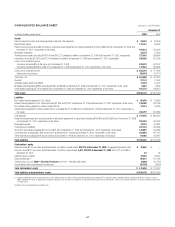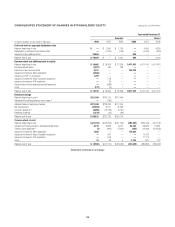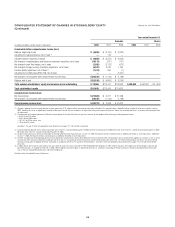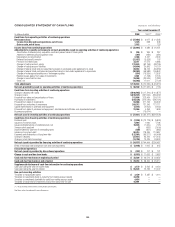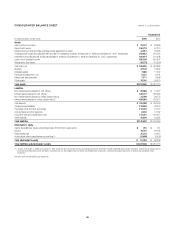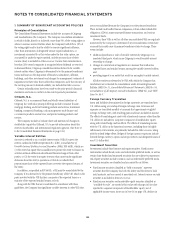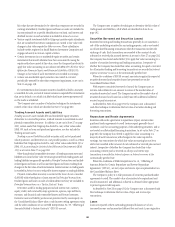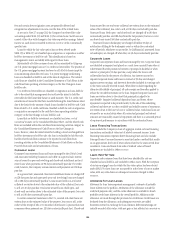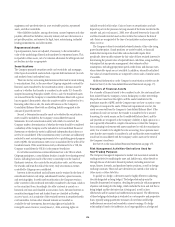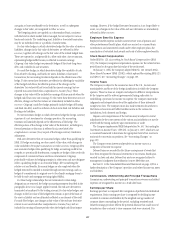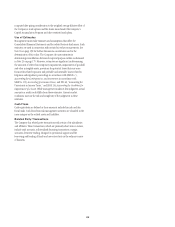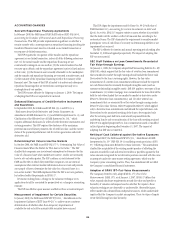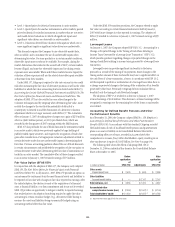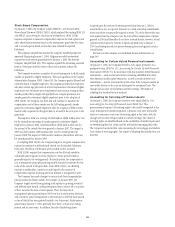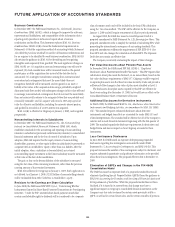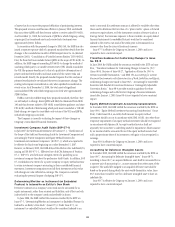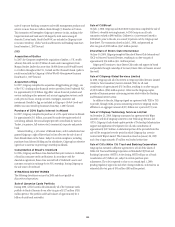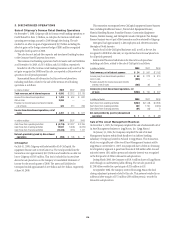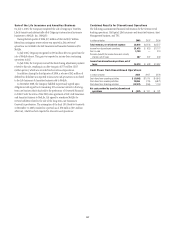Citibank 2008 Annual Report Download - page 133
Download and view the complete annual report
Please find page 133 of the 2008 Citibank annual report below. You can navigate through the pages in the report by either clicking on the pages listed below, or by using the keyword search tool below to find specific information within the annual report.any gains or losses attributable to the derivatives, as well as subsequent
changes in fair value, are recognized in Other revenue.
The foregoing criteria are applied on a decentralized basis, consistent
with the level at which market risk is managed, but are subject to various
limits and controls. The underlying asset, liability or forecasted transaction
may be an individual item or a portfolio of similar items.
For fair value hedges, in which derivatives hedge the fair value of assets or
liabilities, changes in the fair value of derivatives are reflected in Other
revenue, together with changes in the fair value of the related hedged item.
These are expected to, and generally do, offset each other. Any net amount,
representing hedge ineffectiveness, is reflected in current earnings.
Citigroup’s fair value hedges are primarily hedges of fixed-rate long-term
debt, and available-for-sale securities.
For cash flow hedges, in which derivatives hedge the variability of cash
flows related to floating- and fixed-rate assets, liabilities or forecasted
transactions, the accounting treatment depends on the effectiveness of the
hedge. To the extent these derivatives are effective in offsetting the variability
of the hedged cash flows, the effective portion of the changes in the
derivatives’ fair values will not be included in current earnings, but are
reported in Accumulated other comprehensive income (loss). These
changes in fair value will be included in earnings of future periods when the
hedged cash flows come into earnings. To the extent these derivatives are not
effective, changes in their fair values are immediately included in Other
revenue. Citigroup’s cash flow hedges primarily include hedges of floating
and fixed rate debt, as well as rollovers of short-term fixed rate liabilities and
floating-rate liabilities.
For net investment hedges in which derivatives hedge the foreign currency
exposure of a net investment in a foreign operation, the accounting
treatment will similarly depend on the effectiveness of the hedge. The
effective portion of the change in fair value of the derivative, including any
forward premium or discount, is reflected in Accumulated other
comprehensive income (loss) as part of the foreign currency translation
adjustment.
End-user derivatives that are economic hedges, rather than qualifying for
SFAS 133 hedge accounting, are also carried at fair value, with changes in
value included in Principal transactions or Other revenue. Citigroup often
uses economic hedges when qualifying for hedge accounting would be too
complex or operationally burdensome; examples are hedges of the credit risk
component of commercial loans and loan commitments. Citigroup
periodically evaluates its hedging strategies in other areas and may designate
either a qualifying hedge or an economic hedge, after considering the
relative cost and benefits. Economic hedges are also employed when the
hedged item itself is marked to market through current earnings, such as
hedges of commitments to originate one-to-four-family mortgage loans to
be held-for-sale and mortgage servicing rights (MSRs).
For those hedge relationships that are terminated or when hedge
designations are removed, the hedge accounting treatment described in the
paragraphs above is no longer applied. Instead, the end-user derivative is
terminated or transferred to the trading account. For fair-value hedges, any
changes in the fair value of the hedged item remain as part of the basis of
the asset or liability and are ultimately reflected as an element of the yield.
For cash-flow hedges, any changes in fair-value of the end-user derivative
remain in Accumulated other comprehensive income (loss) and are
included in earnings of future periods when the hedged cash flows impact
earnings. However, if the hedged forecasted transaction is no longer likely to
occur, any changes in fair value of the end-user derivative are immediately
reflected in Other revenue.
Employee Benefits Expense
Employee benefits expense includes current service costs of pension and
other postretirement benefit plans, which are accrued on a current basis,
contributions and unrestricted awards under other employee plans, the
amortization of restricted stock awards and costs of other employee benefits.
Stock-Based Compensation
Under SFAS No. 123, Accounting for Stock-Based Compensation (SFAS
123), the Company recognizes compensation expense over the related service
period based on the grant date fair value of the stock award.
On January 1, 2006, the Company adopted SFAS No. 123 (revised 2004),
Share-Based Payment (SFAS 123(R)), which replaced the existing SFAS 123
and APB 25. See “Accounting Changes” on page 129.
Income Taxes
The Company is subject to the income tax laws of the U.S., its states and
municipalities and those of the foreign jurisdictions in which the Company
operates. These tax laws are complex and subject to different interpretations
by the taxpayer and the relevant governmental taxing authorities. In
establishing a provision for income tax expense, the Company must make
judgments and interpretations about the application of these inherently
complex tax laws. The Company must also make estimates about when in
the future certain items will affect taxable income in the various tax
jurisdictions, both domestic and foreign.
Disputes over interpretations of the tax laws may be subject to review/
adjudication by the court systems of the various tax jurisdictions or may be
settled with the taxing authority upon examination or audit.
The Company implemented FASB Interpretation No. 48, “Accounting for
Uncertainty in Income Taxes” (FIN 48), on January 1, 2007, which sets out
a consistent framework to determine the appropriate level of tax reserves to
maintain for uncertain tax positions. See “Accounting Changes” on
page 129.
The Company treats interest and penalties on income taxes as a
component of Income tax expense.
Deferred taxes are recorded for the future consequences of events that
have been recognized for financial statements or tax returns, based upon
enacted tax laws and rates. Deferred tax assets are recognized subject to
management’s judgment that realization is more likely than not.
See Note 11 to the Consolidated Financial Statements on page 152 for a
further description of the Company’s provision and related income tax assets
and liabilities.
Commissions, Underwriting and Principal Transactions
Commissions, underwriting and principal transactions revenues and related
expenses are recognized in income on a trade-date basis.
Earnings per Share
Earnings per share is computed after recognition of preferred stock dividend
requirements. Basic earnings per share is computed by dividing income
available to common stockholders by the weighted average number of
common shares outstanding for the period, excluding restricted stock.
Diluted earnings per share reflects the potential dilution that could occur if
securities or other contracts to issue common stock were exercised. It is
127


